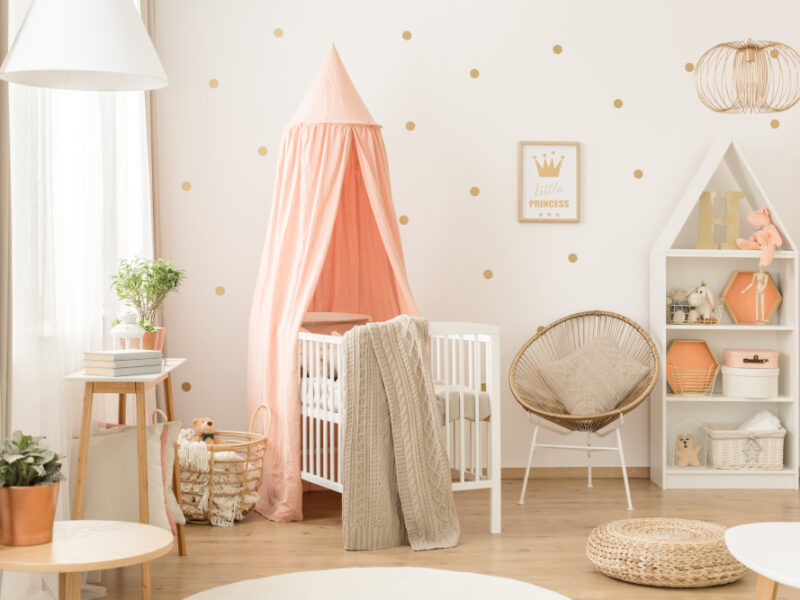
The Pros and Cons of Using Knitwear for Baby Clothing
When it comes to dressing your little bundle of joy, comfort and style are two factors that often top the list of priorities. Knitwear for baby clothing has long been a popular choice for parents seeking both warmth and charm in their baby’s wardrobe.
In this blog post, we’ll explore the pros and cons of using knitwear for babies, helping you make informed decisions about dressing your precious one in the softest, coziest outfits.
Table of Contents
The Pros of Using Knitwear for Baby Clothing
1. Comfort is Key
Knitwear is renowned for its softness and flexibility, making it an ideal choice for baby clothing. The gentle stretch of knit fabrics ensures that your baby can move freely, promoting comfort and reducing irritation that may arise from tight or restrictive clothing. Babies can wriggle, roll, and explore to their heart’s content while staying comfortable and cozy.
2. Excellent Insulation
Babies are more susceptible to temperature fluctuations, and knitwear’s natural insulating properties help regulate their body temperature. Knit fabrics trap warm air close to the baby’s skin, keeping them snug and warm during colder months. Whether it’s a cardigan, sweater, or blanket, knitwear provides the extra layer of warmth your baby needs.
3. Durability
Knitwear is known for its durability and ability to withstand frequent washing, which is a crucial factor when it comes to baby clothing. Babies can be messy, and their clothes often need to be laundered frequently. With proper care, knitwear can endure repeated wash cycles and maintain its quality, making it a practical choice for parents.
4. Aesthetic Appeal
One of the standout features of knitwear is its timeless and classic aesthetic. From intricate cable knits to simple, textured patterns, knitwear adds a touch of charm and sophistication to your baby’s wardrobe. The versatility of knitwear allows you to dress your baby in cute and stylish outfits for various occasions.
The Cons of Using Knitwear for Baby Clothing
1. Prone to Snags
While knitwear is durable, it can be more prone to snags and pulls compared to other types of fabrics. Babies’ nails can be surprisingly sharp, and they might inadvertently snag their knitwear, leading to unsightly blemishes or holes. To mitigate this, keep your baby’s nails trimmed and consider layering with other clothing items.
2. Maintenance Required
Knitwear, especially items like hand-knit blankets and sweaters, may require special care. Some knit fabrics can shrink, stretch, or lose their shape when exposed to certain washing conditions. Always check the care instructions on the garment’s label and follow them carefully to ensure the longevity of your baby’s knitwear.
3. Potential Allergies
While rare, some babies may develop skin sensitivities or allergies to certain types of knit fabrics. It’s essential to be mindful of your baby’s skin reactions and choose hypoallergenic yarns or organic options if your baby has a known sensitivity.
4. Seasonal Limitations
Knitwear is best suited for cooler weather due to its insulating properties. During hot summer months, dressing your baby in heavy knitwear may lead to overheating. To address this, consider lightweight knit options or reserve knitwear for cooler seasons.
Top Tips for Maintaining Baby Knitwear
Baby knitwear is not only adorable but also functional, providing warmth and comfort for your little one. To keep these precious garments in excellent condition, it’s important to follow some simple maintenance tips. Here’s a list of the best ways to ensure your baby’s knitwear stays cozy and cute:
1. Read Care Labels
Always start by checking the care label on each knitwear item. The manufacturer’s instructions will provide specific guidance on how to care for the garment, including washing, drying, and ironing recommendations. Follow these instructions carefully to prevent damage.
2. Hand Washing
Hand washing is often the gentlest method for cleaning knitwear. Use a mild detergent or baby-specific laundry detergent to avoid harsh chemicals that can irritate your baby’s skin. Gently agitate the water and soak the knitwear for a short time. Avoid wringing or twisting the garment, as this can stretch or misshape it.
3. Use a Laundry Bag
Consider placing your baby’s knitwear inside a laundry bag or pillowcase with a zipper closure when machine washing. This will protect the delicate knit from abrasion and snagging by other items in the load.
4. Machine Washing
If you choose to machine wash, use a gentle cycle with cold water and a mild detergent. Fasten all buttons and zippers to prevent snagging. Avoid washing knitwear with items that have Velcro, as it can damage the delicate fibers.
5. Avoid Fabric Softeners
Fabric softeners can break down the fibres in knitwear over time. Opt for a detergent without added softeners or chemicals that may be harmful to your baby’s skin.
6. Dry Flat
After washing, gently reshape the knitwear to its original size and lay it flat on a clean, dry towel. Avoid hanging knitwear, as the weight can stretch the fabric. Allow it to air dry naturally, away from direct sunlight and heat sources. Flip it over periodically to ensure even drying.
7. Store Properly
When your baby isn’t wearing their knitwear, store it in a cool, dry place. Avoid folding or hanging it for extended periods to prevent stretching. Instead, use acid-free tissue paper to pad and protect the garment if you need to store it in a drawer.
8. Check for Snags
Regularly inspect your baby’s knitwear for any loose threads or snags. If you find any, use a blunt-tipped needle or a crochet hook to carefully pull them through to the inside of the garment to prevent further damage.
9. Avoid Harsh Chemicals
Be cautious with stain removers and spot treatments. Test them on an inconspicuous area of the knitwear first to ensure they won’t discolor or damage the fabric.
10. Rotate Garments
If your baby has multiple knitwear pieces, rotate them to evenly distribute wear and tear. This will help extend the lifespan of each item.
By following these maintenance tips, you can ensure that your baby’s knitwear remains cozy and cute, ready to keep them warm and stylish throughout their early years. Taking a little extra care when washing and storing these cherished garments can make all the difference in preserving their quality and beauty.





No Comment